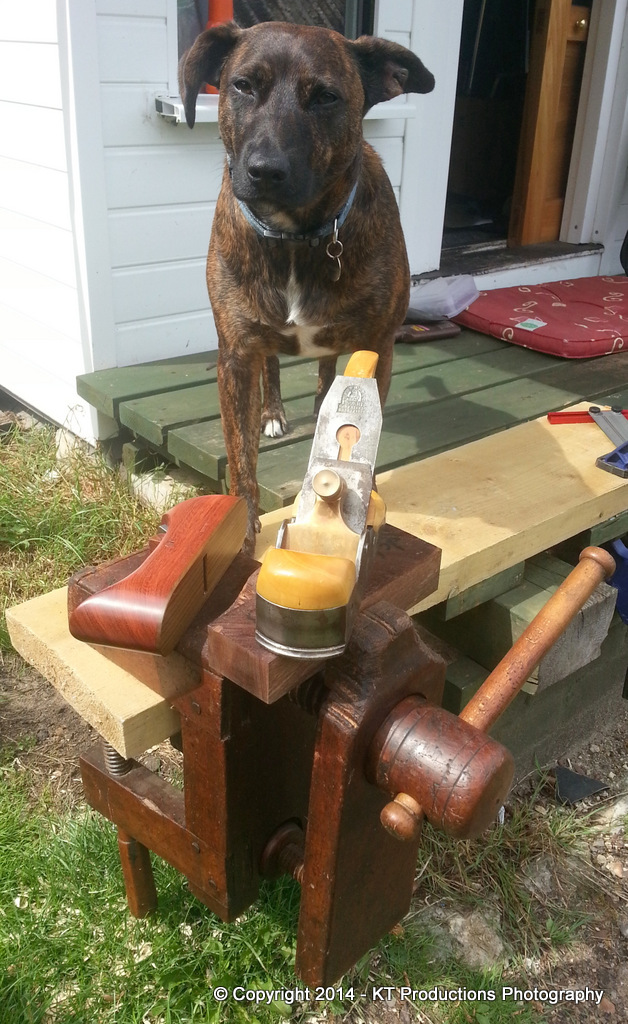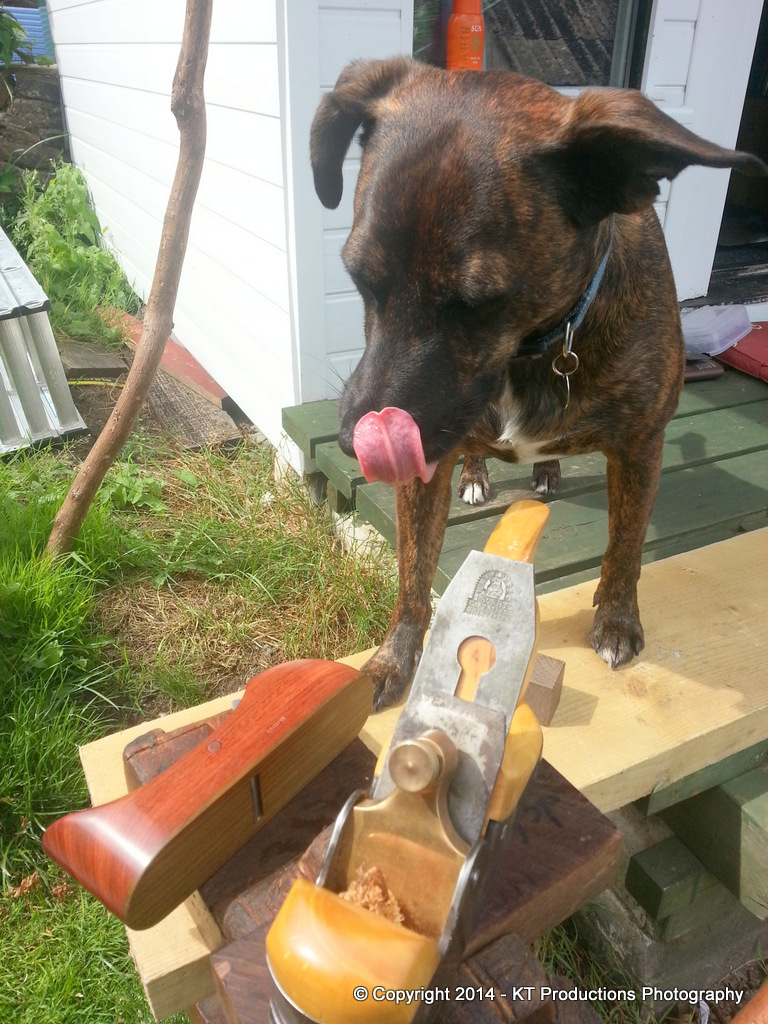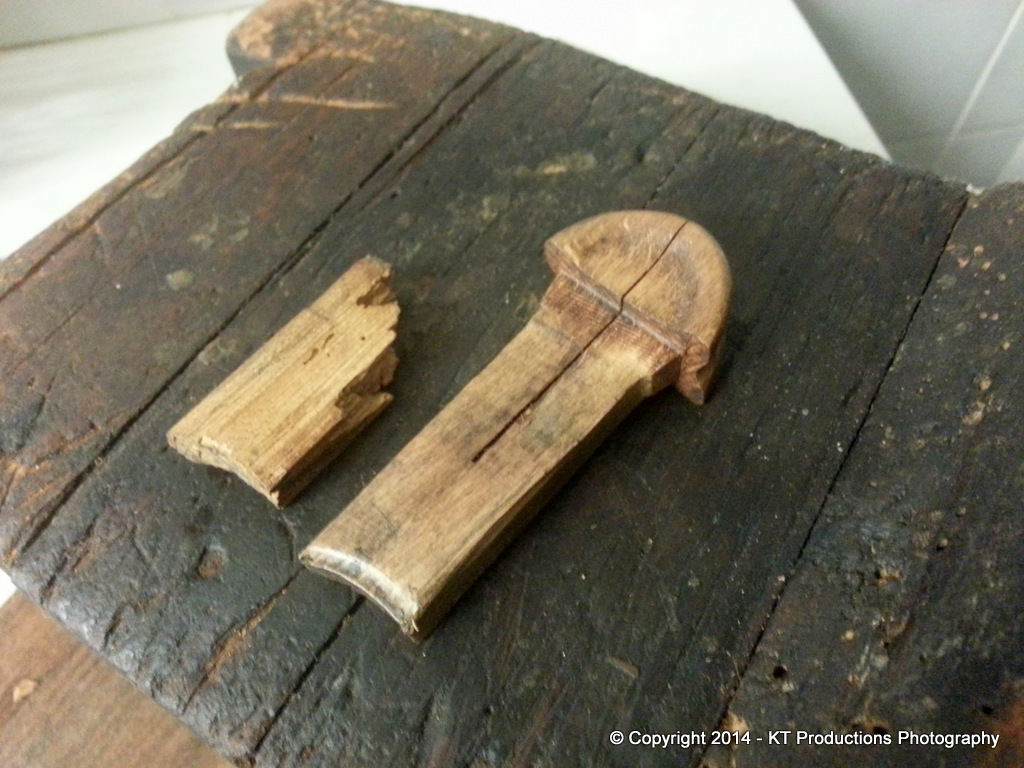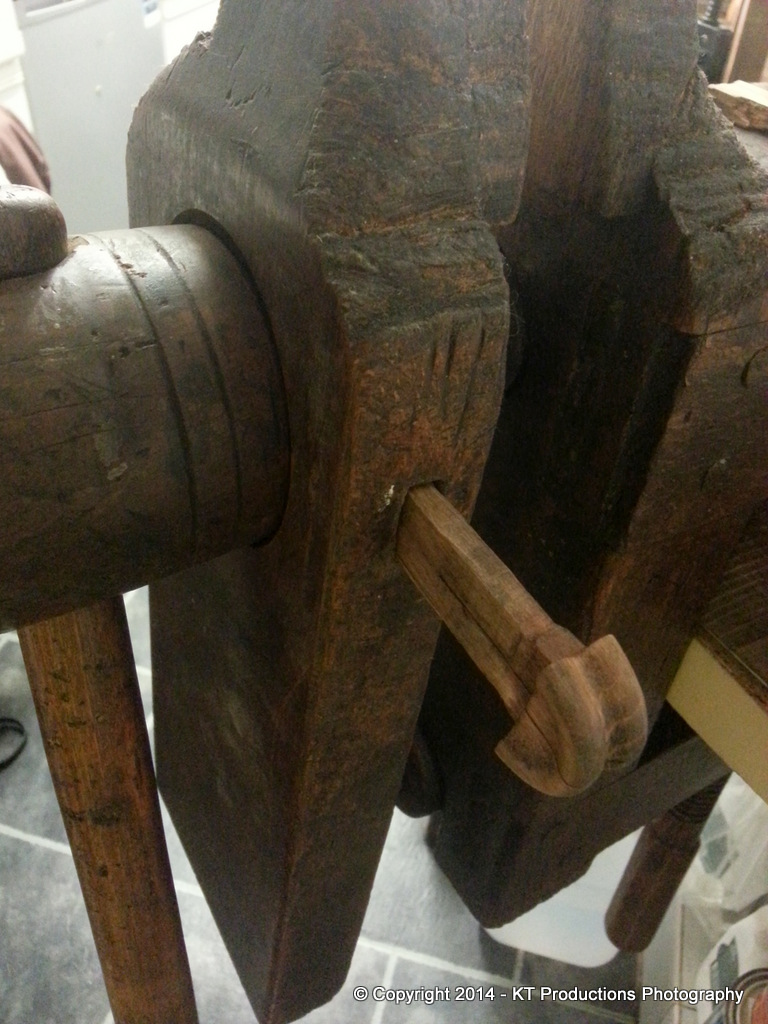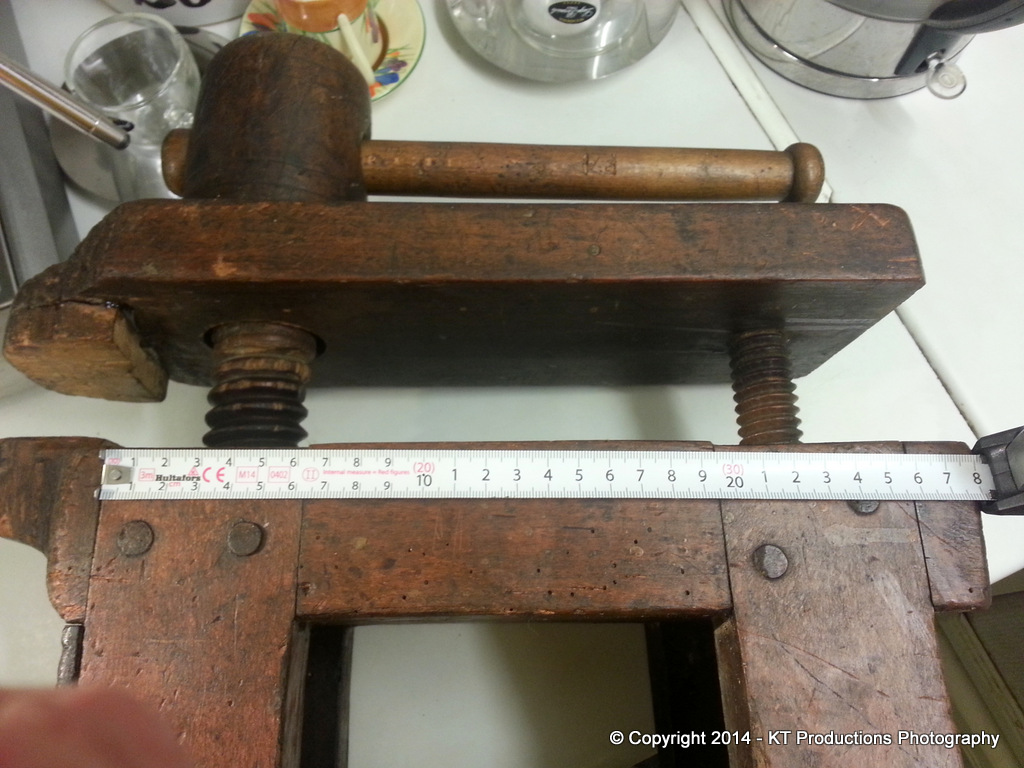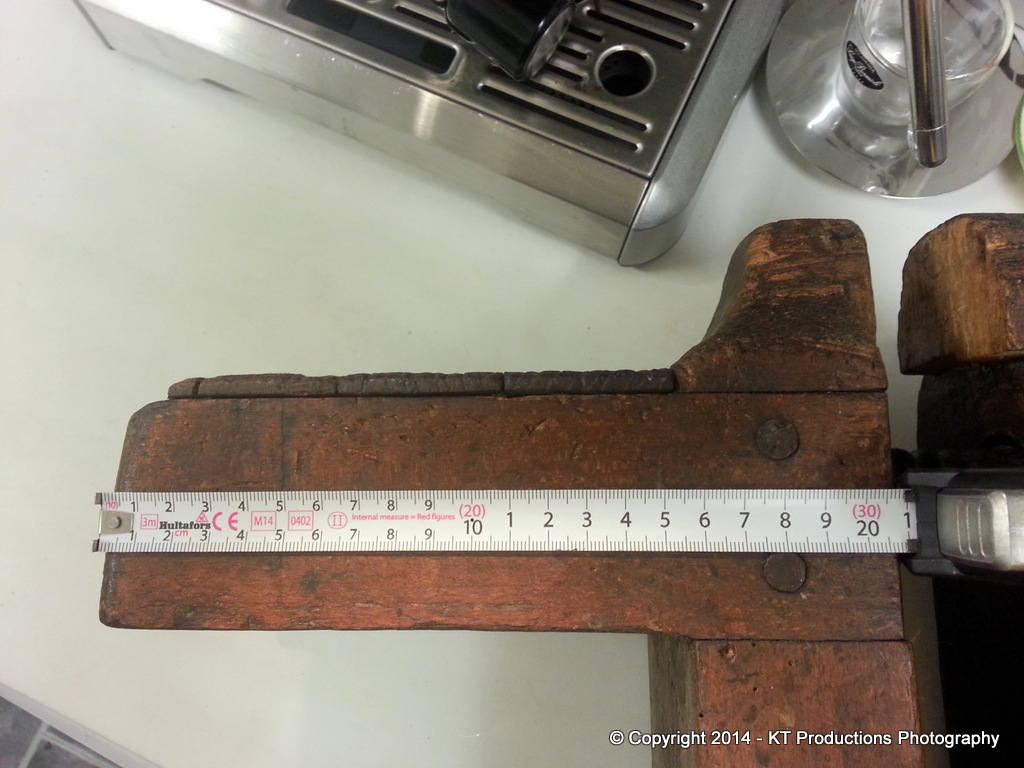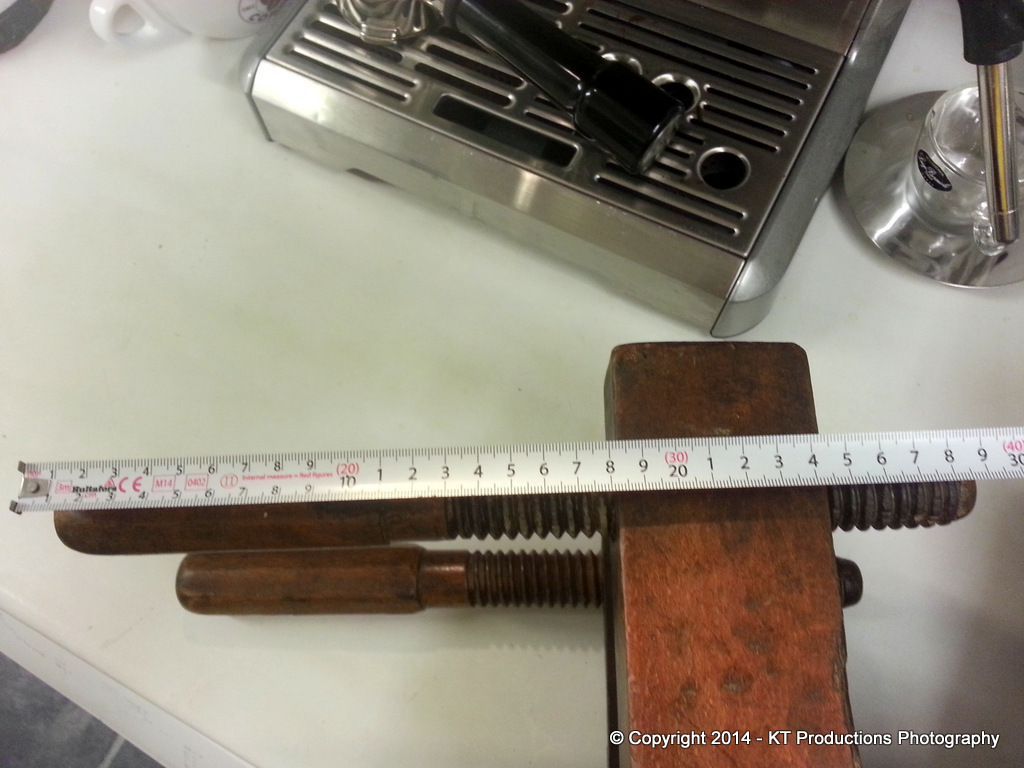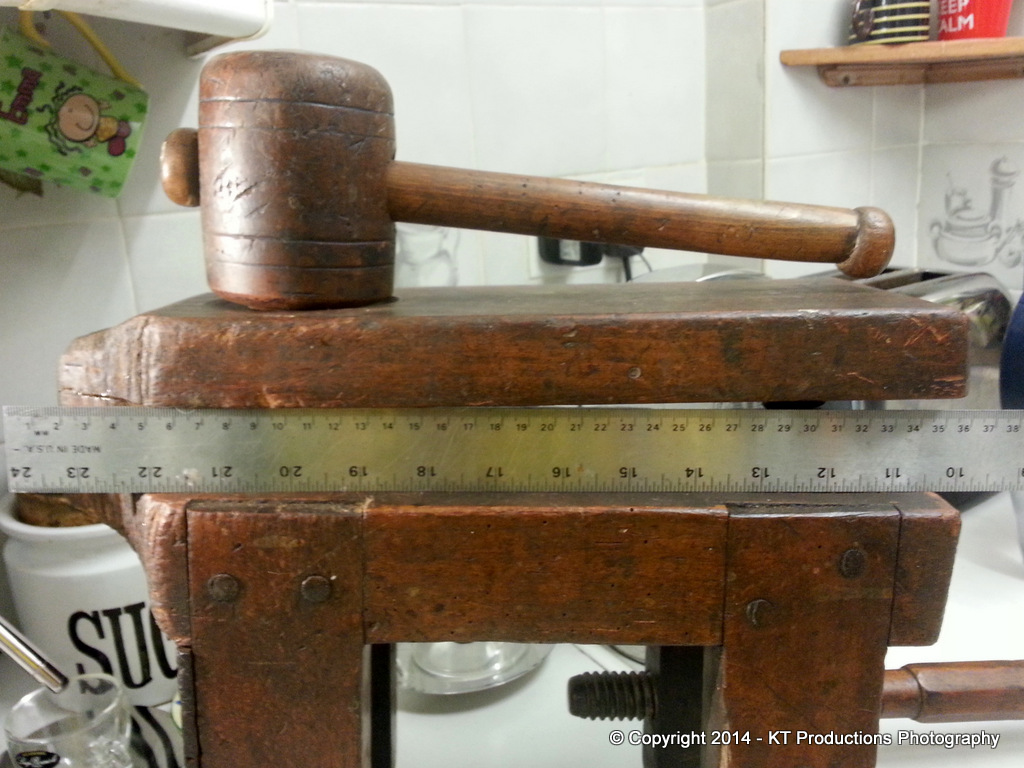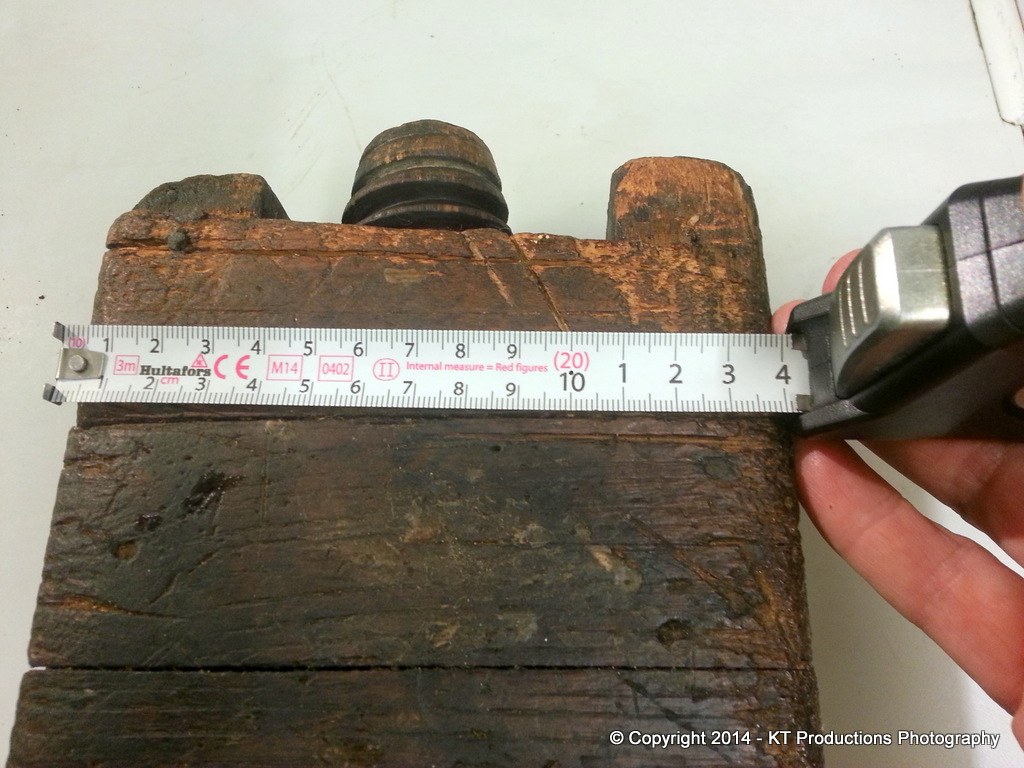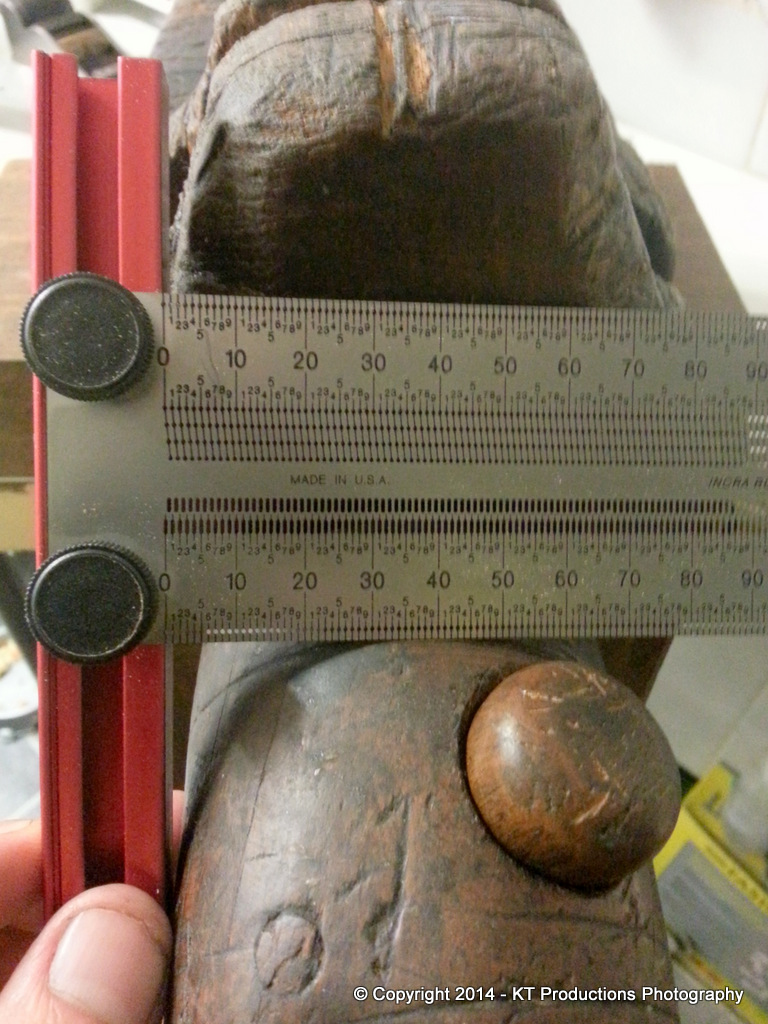jimi43
Established Member
I recently acquired this little beauty mentioned in the bootfair thread but I thought I would share some research I have been doing on it over the past week...
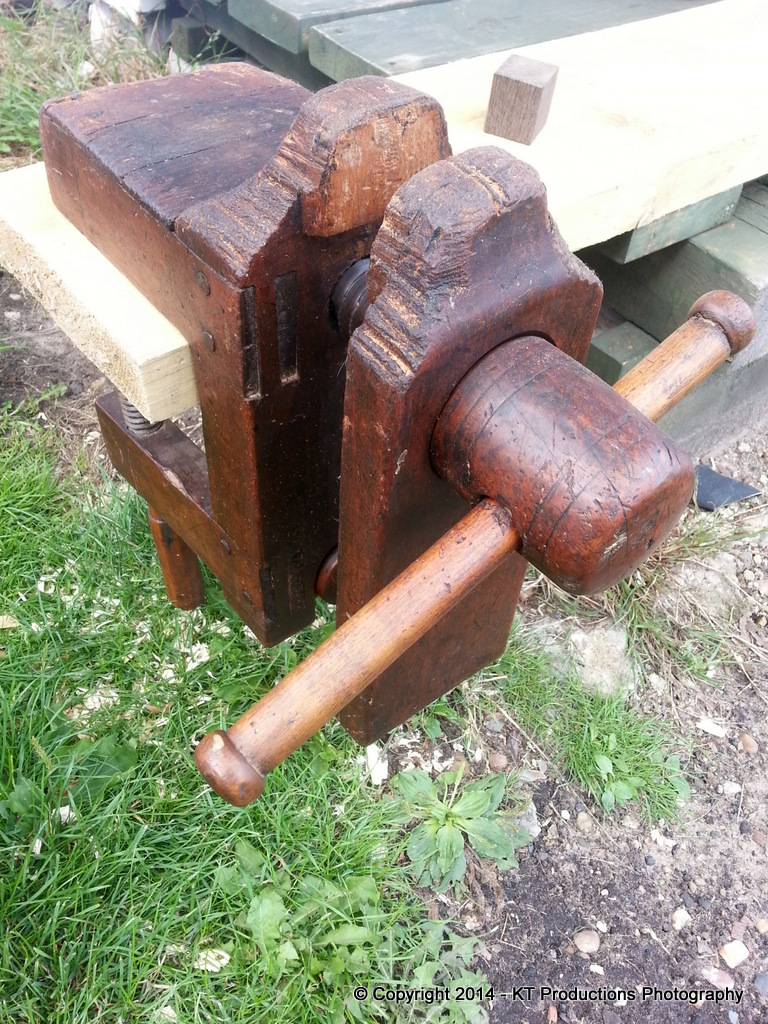
First of all..it's obviously old...and as I knew it came from France...because the guy I got it from brought it over himself...I started with the French for "vise" which is L'Etau (with an acute accent on the E).
Having got that far....applying Le Google...I found that it was a portable vise used for carving and sculpturing or L'Etau de Sculpture.....
This website FIXATION DE LA SCULPTURE SUR BOIS shows a very similar model....
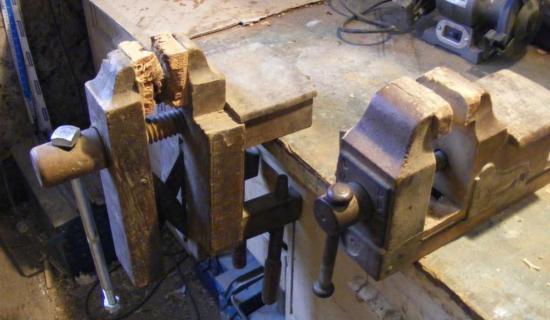
The jaws would have originally been covered in cork...which was no doubt sacrificial so I think I might add this facility later...if I can find some suitable cork that size!
The construction is similar to the fixed Roubo vise in that the jaws are driven by two screws...
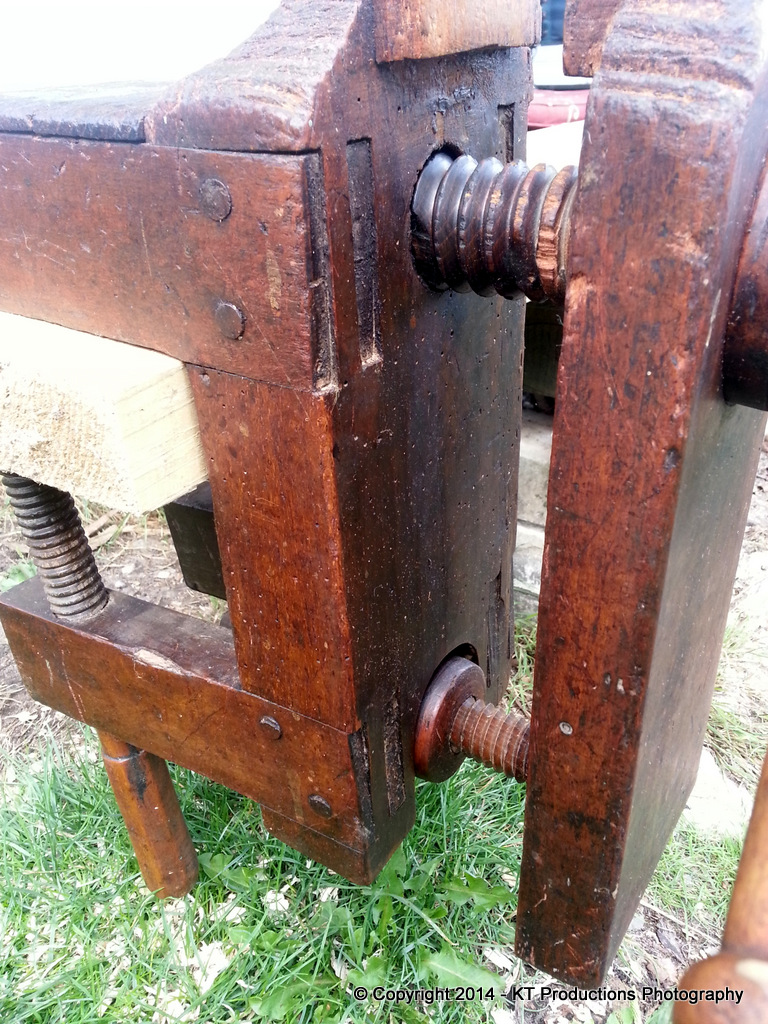
...one opening and closing the vise...and the other with a locking disc which allows the bottom to be set parallel to the top to make clamping more secure.
The drive screw is protected from the top by slats of wood nailed over it thus...
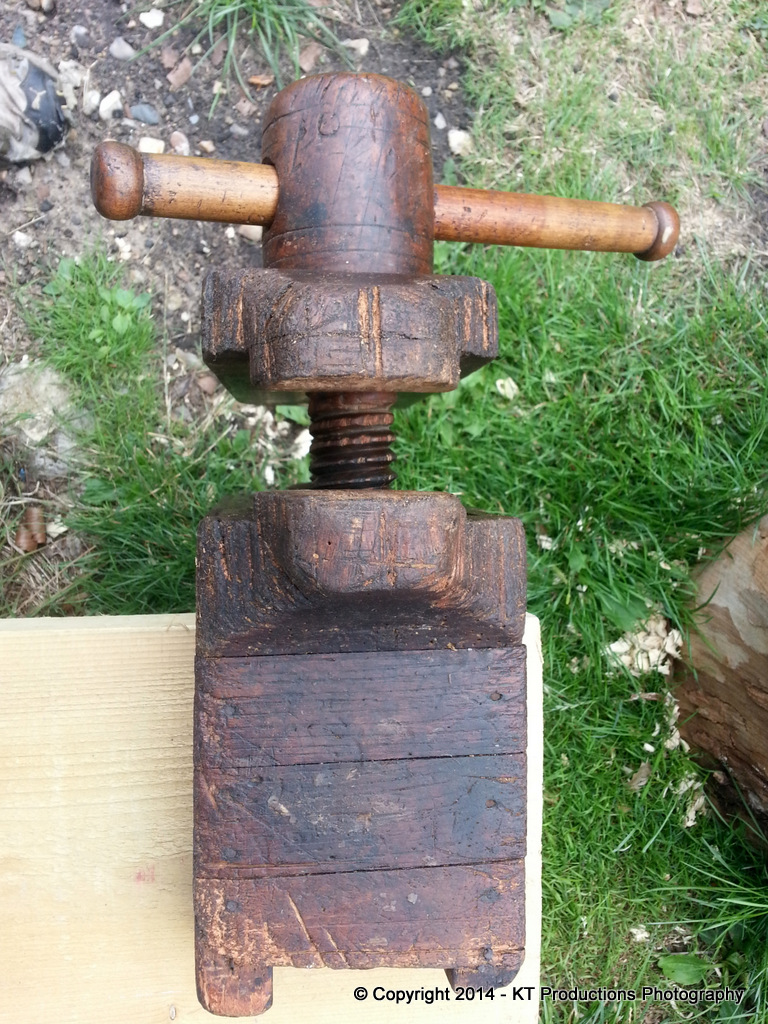
This prevents debris and sharp objects from falling on it for most of the time......
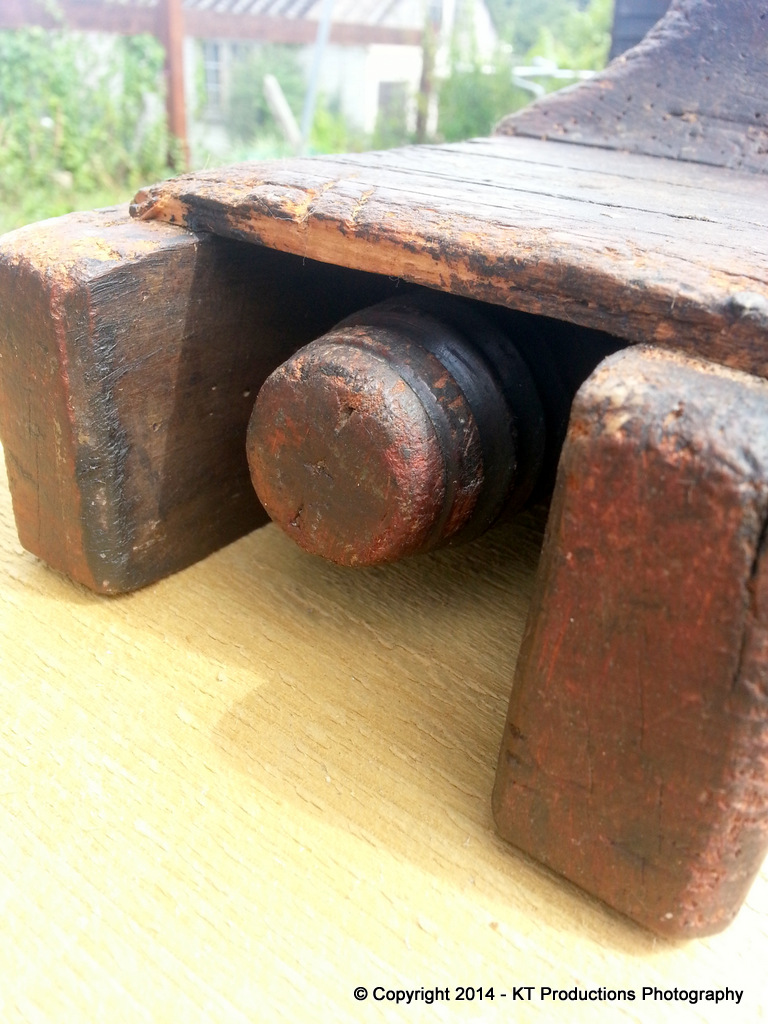
......and this has clearly worked very well judging by the condition of the unexposed part of the wooden screw...
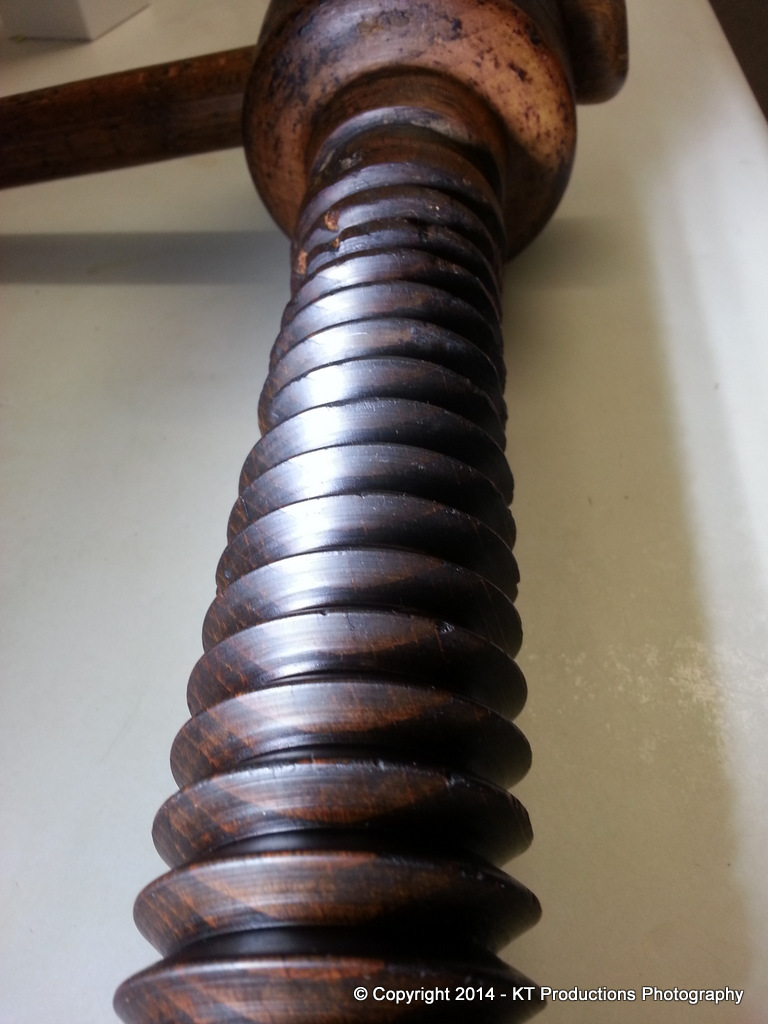
Note how the damage has only occurred where the thread are exposed between the closed jaws.
The vise is made portable by the use of two further wooden screws from underneath....

These are in remarkably good condition considering the age of the vise and the vulnerability of these two screws....though both are a bit warped with age and clearly the minimum thickness of French benches of this age was far thicker than today.
I will be testing the vise out over the next few weeks and I think this will be gentle enough to put the infill panel plane in to do the final touches....
Typical...I just spent ages restoring my Zylyss vise and putting thick leather jaws on it...!!!
Oh well...c'est la vie!!! :mrgreen:
Jimi

First of all..it's obviously old...and as I knew it came from France...because the guy I got it from brought it over himself...I started with the French for "vise" which is L'Etau (with an acute accent on the E).
Having got that far....applying Le Google...I found that it was a portable vise used for carving and sculpturing or L'Etau de Sculpture.....
This website FIXATION DE LA SCULPTURE SUR BOIS shows a very similar model....

The jaws would have originally been covered in cork...which was no doubt sacrificial so I think I might add this facility later...if I can find some suitable cork that size!
The construction is similar to the fixed Roubo vise in that the jaws are driven by two screws...

...one opening and closing the vise...and the other with a locking disc which allows the bottom to be set parallel to the top to make clamping more secure.
The drive screw is protected from the top by slats of wood nailed over it thus...

This prevents debris and sharp objects from falling on it for most of the time......

......and this has clearly worked very well judging by the condition of the unexposed part of the wooden screw...

Note how the damage has only occurred where the thread are exposed between the closed jaws.
The vise is made portable by the use of two further wooden screws from underneath....

These are in remarkably good condition considering the age of the vise and the vulnerability of these two screws....though both are a bit warped with age and clearly the minimum thickness of French benches of this age was far thicker than today.
I will be testing the vise out over the next few weeks and I think this will be gentle enough to put the infill panel plane in to do the final touches....
Typical...I just spent ages restoring my Zylyss vise and putting thick leather jaws on it...!!!
Oh well...c'est la vie!!! :mrgreen:
Jimi





